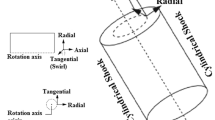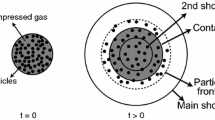Abstract.
The objective of this study is to understand the flow structures of weak and strong spherical blast waves either propagating in a free field or interacting with a flat plate. A 5th-order weighted essentially non-oscillatory scheme with a 4th-order Runge-Kutta method is employed to solve the compressible Euler/Navier-Stokes equations in a finite volume approach. The real-gas effects are taken into account when high temperature occurs. A shock-tube problem with the real-gas effect is first tested in order to verify the solver accuracy. Moreover, unsteady shock waves moving over a stationary wedge with various wedge angles, resulting in different types of shock wave reflections, are also tested. It is found that the computed results agreed well with the existing data. Second, the propagation of a weak spherical blast wave, created by rupture of a high-pressure isothermal sphere, in a free field is studied. It is found that there are three minor shock waves moving behind the main shock. Third, the problem of a strong blast wave interacting with a flat plate is investigated. The flow structures associated with single and double Mach reflections are reported in detail. It is found that there are at least three local high-pressure regions near the flat plate.
Similar content being viewed by others
Author information
Authors and Affiliations
Additional information
Received 27 July 2000 / Accepted 25 January 2002 – Published online 17 June 2002
Rights and permissions
About this article
Cite this article
Liang, S., Wang, J. & Chen, H. Numerical study of spherical blast-wave propagation and reflection. Shock Waves 12, 59–68 (2002). https://doi.org/10.1007/s00193-002-0142-5
Issue Date:
DOI: https://doi.org/10.1007/s00193-002-0142-5




